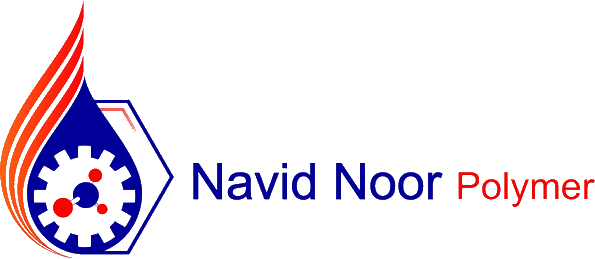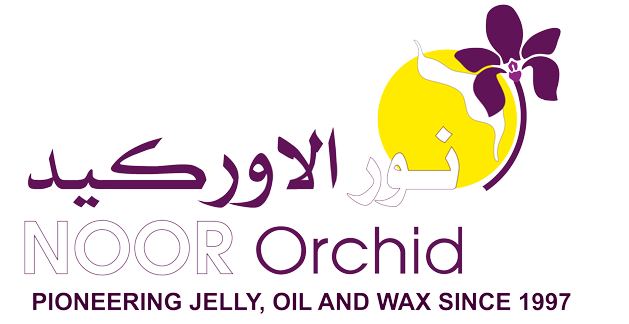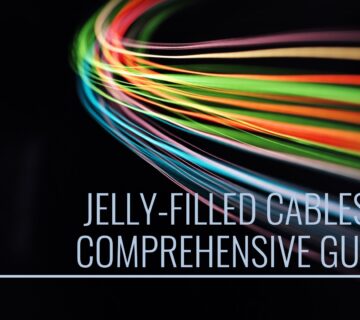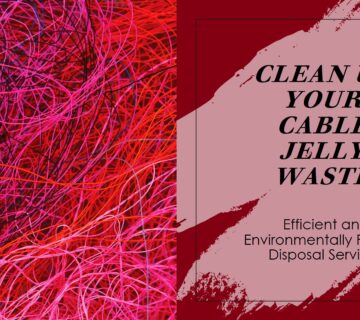Introduction: The Global Connectivity Unsung Hero
Working as a telecommunications engineer, I have always found great fascination in the complex parts enabling our worldwide communication system. Among them, cable jelly compounds are especially underappreciated yet are very vital in preserving the integrity of our communications cables. I will explore the field of cable jelly compounds in great detail, their importance in the telecoms sector, and the innovative advancements influencing their future. From their modest origins to their indispensable importance in our ever-linked society, cable jelly compounds have a narrative that merits telling. Travel with me as we discover the science, uses, and inventions behind these amazing compounds.
1. The Genesis of Cable Jelly Compounds
1.1 A Synopsis: From Petroleum Byproduct to Telecommunications Essential
Their unusual source caught me off guard when I first discovered the background of cable jelly compounds. The narrative starts in the late 19th century when Robert Chesebrough[^1] discovered petroleum jelly. Originally employed for medical needs, engineers soon saw its possibilities in industrial uses. Early in the 20th century, engineers looking for means of safeguarding the expanding network of telephone wires made the switch to telecommunications. Derived from petroleum jelly, cable jelly compounds were a perfect answer as they provided water resistance and electrical insulating qualities needed to preserve cable integrity.
1.2 Chemical Composition: Science Driving the Jelly
Deeper into the chemistry of cable jelly molecules, I found a wonderful universe of sophisticated hydrocarbons. Fundamentally, these drugs are based on synthetic hydrocarbons or mineral oils, usually mixed with other chemicals to improve certain qualities[^2]. Usually long-chain hydrocarbons, as those in petroleum jelly, the base ingredients provide the compound its unique gel-like viscosity. Among additives are polymers to change viscosity, tackifiers to increase adherence, and antioxidants to stop deterioration. This chemical mix produces a material specifically fit for safeguarding telecommunications wires in different surroundings.
1.3 Development of Formulations: Changing with the Times to Meet Need
Over my tenure, I have seen personally the changes in cable jelly formulas. The need for cable protection systems grew as telecommunications technology developed. Early formulations paid mostly for basic insulation and moisture resistance. New problems surfaced, however, as fiber optics developed and data transfer rates soared. Modern cable jelly compounds are designed to solve more general problems like better temperature management, greater signal integrity, and high-frequency transmission compatibility. This development captures the dynamic character of the telecom sector and the continuous requirement of innovation in supporting technology.
1.4 Environmental Issues: The Sustainable Push
I have especially been very fascinated by the increasing focus on environmental sustainability in cable jelly compound construction recently. The industry has been strongly pushed to create more environmentally friendly formulas as knowledge of environmental problems has grown. This has spurred investigation on plant-based chemicals and biodegradable substitutes with comparable protective qualities free of the long-term environmental effect of conventional petroleum-based products[^3]. Although it is still difficult to match the performance of traditional formulations, development in this field shows a more general change toward sustainability in the telecoms industry.
1.5 Regulatory Landscape: guaranteeing performance and safety
Part of my job has been negotiating the legal terrain around cable jelly complexes. These molecules are subject to different rules and norms as they are so important for the infrastructure of telecommunications. These address things like environmental effects, performance objectives, and chemical safety. Specific guidelines for cable filler compounds have been published by groups such as the American Society for Testing and Materials (ASTM) and the International Electrotechnical Commission (IEC[^4]). Following these rules is not only important for guaranteeing the dependability and safety of telecommunication systems but also for encouraging creativity under a disciplined framework.
2. Cable Jelly Compounds: Their Multiple Function
2.1 Moisture Protection: Drying Cables in Wet Conditions
One of the most important uses for cable jelly compounds, in my experience, is moisture protection. I have personally observed how water intrusion may ruin cable lifetime and performance. By use of a hydrophobic barrier created by cable jelly compounds, water is efficiently repelled, therefore preventing its access to the conducting parts of the cable. Underground and submarine cables, which are always wet, depend especially on this. The jelly covers all the voids in the cable, therefore preventing any area for water to enter. This shielding preserves signal integrity even in the toughest aquatic conditions and increases the life of the cable.
2.2 Electrical Insulation: improving Signal Integrity
Another important function I have seen in cable jelly compounds is that of an electrical insulator. Although individual wires within a cable are already insulated, the jelly compound offers even another degree of protection. In high-voltage or high-frequency applications where signal integrity is critical, this is especially crucial. The jelly’s dielectric qualities reduce cross-talk between neighboring conductors and signal loss. Working with high-speed data cables, I have witnessed how much more insulation helps to preserve signal quality over great distances.
2.3 Thermal Management: Under Pressure Keeping Cables Cool
The difficulty in controlling heat in telecommunications cables has grown along with data transfer rates. Thermal control depends critically on cable jelly compounds, which I have learned to value much in my work with high-bandwidth systems. The jelly helps to equally transfer heat over the cable’s length, therefore avoiding hot patches that can decrease performance or lead to failure. Some sophisticated formulas even include thermally conductive additives to improve this heat-dissipation capacity. As we stretch the limits of data transfer rates, this thermal control capability is growing in relevance.
2.4 Mechanical protection: shielding against physical strain
During my fieldwork, I have often come across circumstances when wires show notable physical stress. For these situations, cable jelly compounds provide an essential layer of mechanical protection. Absuming vibrations and shocks that may otherwise harm the delicate interior components of the cable, the jelly functions as a cushion. as situations where cables are subjected to movement or external stresses, like maritime settings or places prone to seismic activity, this is especially critical. The jelly’s viscoelastic qualities enable it to deform under pressure and then revert to its natural condition, therefore providing continuous protection during the life of the cable.
2.5 Longevity Enhancement: Increasing the Lifespan of Infrastructure for Telecommunication
From my perspective, one of the most important advantages of cable jelly compounds is their capacity to prolong the lifetime of the telecom infrastructure. These chemicals greatly extend cable lifetime by shielding against moisture, electrical problems, mechanical damage, and thermal stress. For infrastructure like submarine cables or large subterranean networks that is difficult or costly to rebuild, this is especially vital. I have worked on projects where well-shielded cables have been operational for decades, far beyond their estimated lifetime. Along with lowering repair costs, its durability guarantees the dependability of our worldwide communications systems.
Three. Uses Over the Telecommunications Range
3.1 Undersea Cables: Negotiating Oceanic Depth
Working on subsea cable networks has helped me to respect the part cable jelly compounds play in this hostile environment. The backbone of worldwide internet communication, these cables endure great pressure, corrosive seawater, and the danger of marine life interference. Particularly developed to resist these demanding environments, cable jelly compounds utilized in these uses are They not only provide exceptional water resistance but also support the structural integrity of the cable under high pressure. Thanks in great part to the protective jelly compounds, I have participated in initiatives where we have retrieved underwater cables after decades of operation and found amazing preservation of these cables.
3.2 Fiber Optic Cables: Conserving High-Speed Communication’s Future
Fiber optic technology has transformed telephony and presented fresh difficulties for cable protection as well. From what I know about fiber optic installations, specific cable jelly formulations are very vital. These chemicals have to be compatible with the fragile glass fibers in addition to shielding against physical strain and moisture. Fiber optic cables’ jelly cushions the fibers, therefore preventing microbeads that can compromise signal quality. Certain formulations also have thixotropic qualities, which lets the jelly flow during installation then set to provide consistent long-term protection[^5].
3.3 Terrestrial Networks: Conserving the Last Mile
Although underwater and long-distance cables garner the most attention, I have discovered that cable jelly compounds are just as crucial in terrestrial networks—including the “last mile” links to homes and businesses. From the heat of metropolitan settings to the cold of rural places, cables in various uses are subjected to a broad spectrum of climatic conditions. These networks need flexible cable jelly compositions that can guard against physical stress, temperature swings, and moisture. Working on projects where we have to create jelly formulations that can function well in both aerial and subsurface installations, I have seen the flexibility of these compounds.
3.4 Data Centers: Guaranturing Reliability in High-density Contextues
In the high-stakes environment of data centers, where downtime might cost millions, cable protection is critical. Having worked with multiple data center projects, I have seen how frequently cable jelly compounds are undervalued in these settings. Heat dissipation and signal integrity are challenged in data centers by closely packed cables running over limited areas. Specialized cable jelly compositions provide outstanding heat conductivity and electrical insulation, therefore helping to control these problems. An important characteristic of these closely packed settings is fire resistance, which the chemicals also help with.
3.5 Wireless Infrastructure: Underlying the Mobile Revolution
Although we usually consider cable jelly compounds about wired networks, wireless infrastructure depends critically on them. Working on cellular network deployments, I have witnessed how these composites shield the wires between antenna arrays and base stations. These cables must have flawless signal integrity for best network performance even if they are often subjected to hostile outside environments. Designed to resist harsh temperatures, UV exposure, and physical stress, cable jelly compounds in these uses provide outstanding electrical characteristics to sustain high-frequency communications.
Fourth Ideas and Future Patterns
4.1 Self-Healing Formulas: Cable Protection’s Next Frontier
Self-healing formulations are among the most fascinating advances I have been tracking in cable jelly compound research. Microencapsulated healing agents found in these novel chemicals release themselves upon cable injury, therefore automatically mending minor wounds or abrasions[^6]. I have seen in laboratory experiments how these self-healing jellies greatly increase the lifetime of cables under demanding conditions. This technique has the potential to transform cable protection even in the early phases of construction, especially in distant or hard-to-access installations where hand repairs are difficult.
4.2 Integrating Nanotechnology: Improving Molecular Level Performance
One additional area where I have seen notable advancement is the inclusion of nanotechnology into cable jelly compositions. like nanoparticles into the jelly recipe will improve many characteristics like mechanical strength, thermal conductivity, and electrical insulation. One project I worked on tested carbon nanotubes to enhance the jelly’s heat management properties. The findings were remarkable, demonstrating a clear increase in heat dissipation without sacrificing other protective qualities. I imagine many more creative uses for nanotechnology in cable protection as it develops.
4.3 Smart Jellies: Reactive Compounds for Dynamic Protection
One area of study that fascinates me especially is the idea of “smart” cable jelly chemicals. These formulations are meant to alter their characteristics in reaction to environmental cues. For instance, I have worked on creating a molecule that increases viscosity in response to water, therefore offering improved resistance against moisture intrusion. Another fascinating prospect is jellies that can adjust their electrical characteristics in response to signal intensity, hence maximizing transmission efficiency. Though they are currently mostly at the experimental stage, these technologies show great promise for the direction of cable protection going forward.
4.4 Biodegradable and Eco-Friendly Solutions: Attaching Sustainability Targets
I have been concentrating more of my study on creating biodegradable and environmentally acceptable cable jelly chemicals as environmental issues keep expanding. This entails looking at plant-based substitutes for conventional petroleum-derived molecules and researching formulations that break down organically over time without negative effects on the surroundings. We are making great progress even if reaching the same degree of performance as traditional jellies still present a difficulty. Though having certain limits under harsh settings, a biodegradable jelly compound has shown good results in terms of moisture protection and lifespan in a recent field study.
4.5 5G and Beyond: Learning to Match Next-Generation Networks
Innovation in cable jelly compounds is being spurred by the deployment of 5G networks and the evolution of the next telecommunications technologies. Working on 5G infrastructure, I have run into fresh difficulties with the higher frequencies and larger data rates of these systems. This has resulted in the creation of tailored jelly compositions with better heat management capacity and dielectric qualities. Anticipating 6G and beyond, we are investigating molecules that can handle even higher frequencies and data rates, maybe including cutting-edge materials like metamaterials to reach hitherto unheard-of degrees of performance.
Fifth Prospects and Difficulties in Cable Jelly Compound Development
5.1 Juggling Environmental Affectance with Performance
Finding the ideal balance between performance and environmental effect is one of the toughest obstacles I encounter when working with cable jelly compounds. Often times, trade-offs in terms of protective qualities or lifetime arise as we work to create more environmentally friendly formulations. For example, certain biodegradable substances may not provide the same degree of long-term moisture control as their petroleum-based equivalents. This difficulty, nevertheless, also offers a chance for creativity. Aiming to attain ideal performance with minimum environmental effect, I am now working on a project investigating hybrid formulations combining the greatest features of conventional and environmentally friendly materials.
5.2 Changing with Extreme Conditions: From Desert Heat to Arctic Cold
From the icy Arctic to sweltering deserts, I have had to create cable jelly compounds for some of the most harsh conditions on Earth in my work. Every one of these settings brings special difficulties. In frigid climes, the jelly has to be flexible and efficient at temperatures far below zero. In warmer regions, it must keep its protective qualities without deteriorating or leaking out of the wire. This has resulted in the creation of broad operating temperature range specialty formulations. For a compound for an Arctic underwater cable project, for instance, I recently worked on which stays steady and efficient from -40°C to +60°C, thereby providing year-round protection in this hostile environment.
5.3 Integration with Novel Technologies and Materials
Ensuring the compatibility of cable jelly compounds becomes more difficult as new materials and technology show up in the telecom sector. This has presented a difficulty especially with the development of new kinds of optical fibers and sophisticated conductor materials. The jelly has to not only shield these parts but also prevent any chemical reactions that can over time compromise their function. This calls for thorough testing and usually results in the creation of rather specific formulas. In one recent effort, we created a bespoke jelly compound guaranteeing long-term compatibility and performance for a new kind of hollow-core optical fiber.
5.4 Global Standardizing and Regulatory Compliance
In cable jelly compound development, negotiating the convoluted terrain of regulatory compliance and worldwide standards is a continuous difficulty. Working on overseas projects, as an engineer has meant making sure our formulas satisfy the various legal requirements of other nations and areas. This usually means juggling constraints on certain chemical components with performance criteria. Global standardizing of cable protection technology is also under increasing demand. Currently involved in an industry working group aiming at creating worldwide standards for cable jelly compounds, I want to tremendously help the sector by guaranteeing uniformity and dependability across several markets.
5.5 Cost-Effectiveness and Scalability
Although creating high-performance cable jelly compounds is critical, as vital is to guaranteeing their scalability and cost-effectiveness for mass manufacturing. From what I know, some of the most exciting new formulas may be difficult to mass-produce or too costly for general use. This offers chances for creative production techniques and material procurement schemes. I’m investigating how green chemistry ideas may be used to create scalable, economically feasible, and ecologically benign manufacturing techniques. By tackling these issues, we can guarantee that sophisticated cable protection solutions are available for a broad spectrum of telecommunications projects, from tiny local networks to large-scale worldwide infrastructure.
Finally: Cable Protection’s Prospect in a Connected World
Looking forward, cable jelly compounds will surely play ever-changing and expanding roles in the future of telecommunications. From the depths of the seas to the distant reaches of space, these little molecules are essential for preserving the worldwide communications system upon which we all depend. Although creating next-generation cable protection technology presents difficult problems, so do the chances for innovation and development.
Over my years working with cable jelly chemicals, their composition and application have advanced remarkably. From smart, sensitive chemicals to self-healing jellies, cable protection has great future possibilities. Cable jelly compounds will be there quietly guaranteeing that our messages, data, and connections stay strong and continuous while we keep stretching the limits of telecommunications technology.
The next time you phone, chat, or stream a video, stop to consider the complex network of shielded wires enabling it all. Every flawless connection results from a world of technical creativity, including the little yet essential cable jelly compound. As discussed here.

This is Kamran Malekian working in the petroleum jelly manufacturing industry for Navid Noor Company since 2013 I am eager to make content in this industry and have a good impact on professional users and people using cosmetic and pharmaceutical products.











No comment